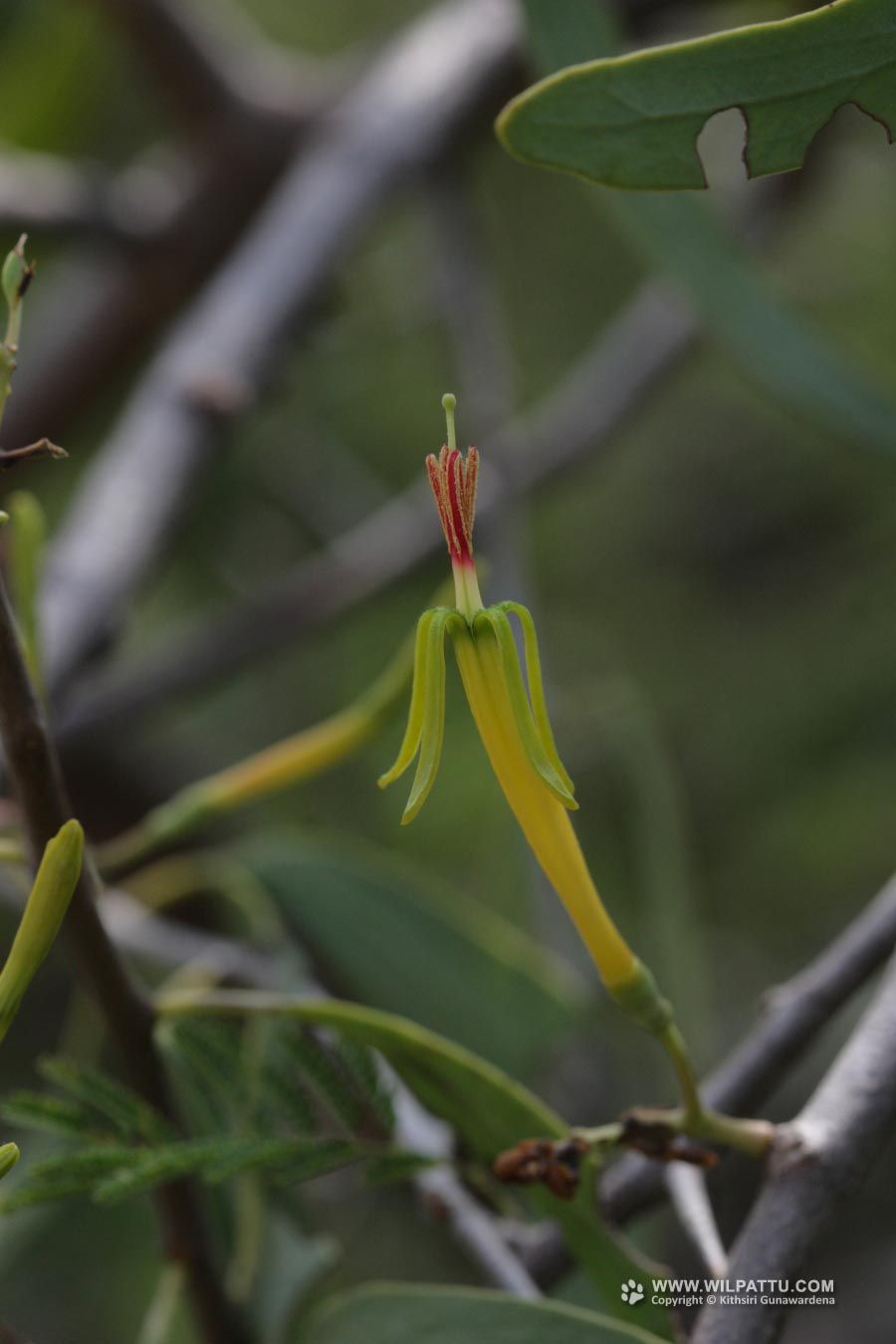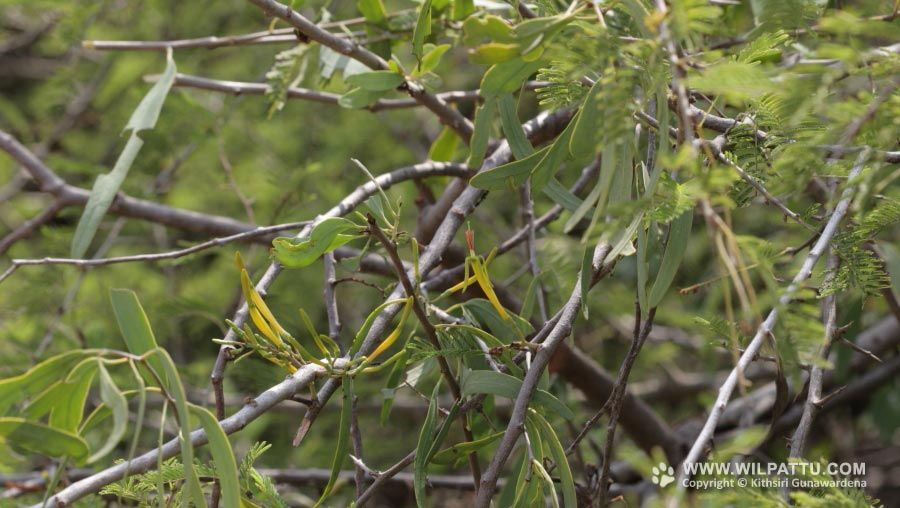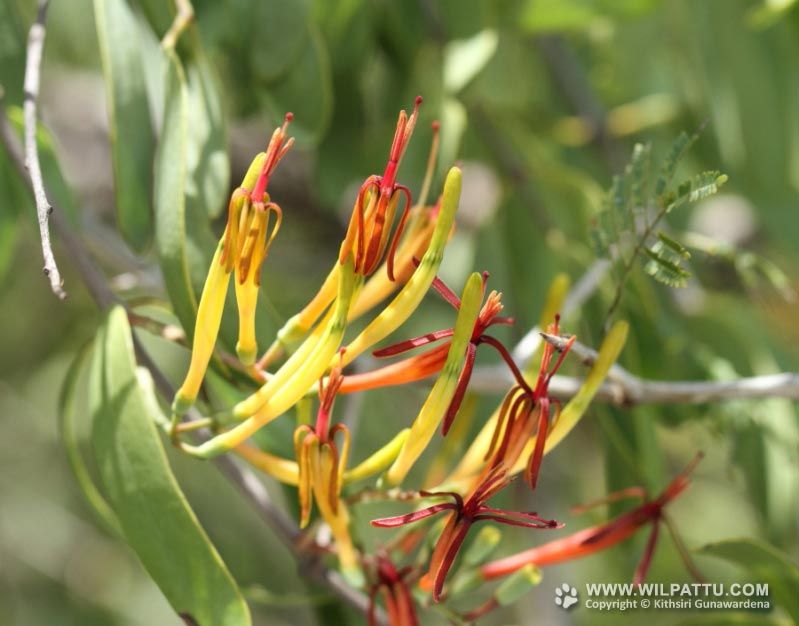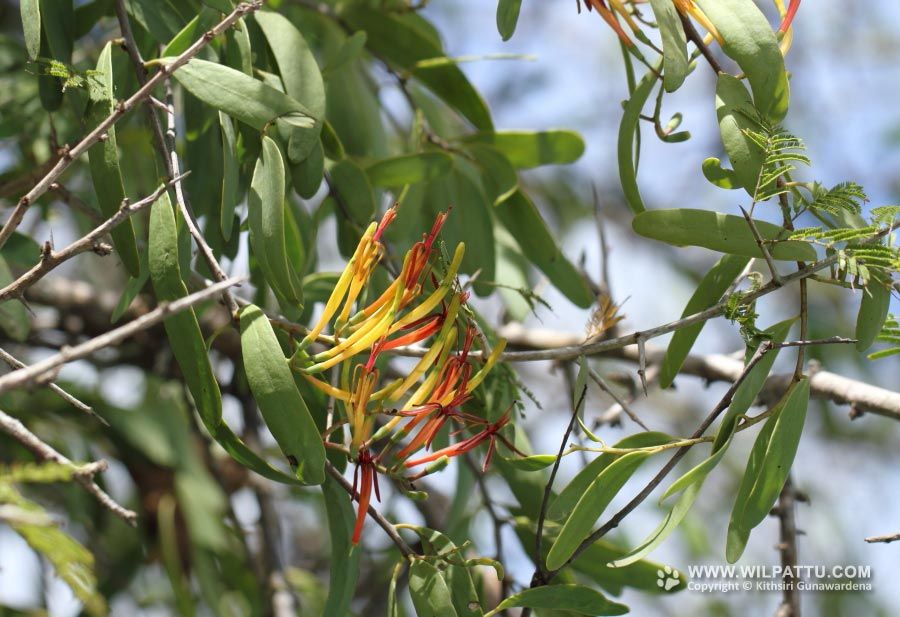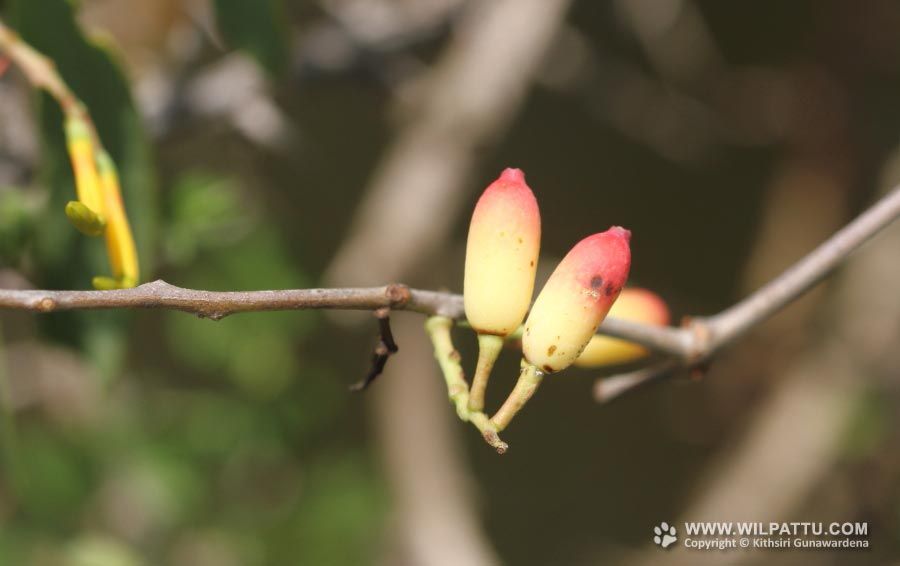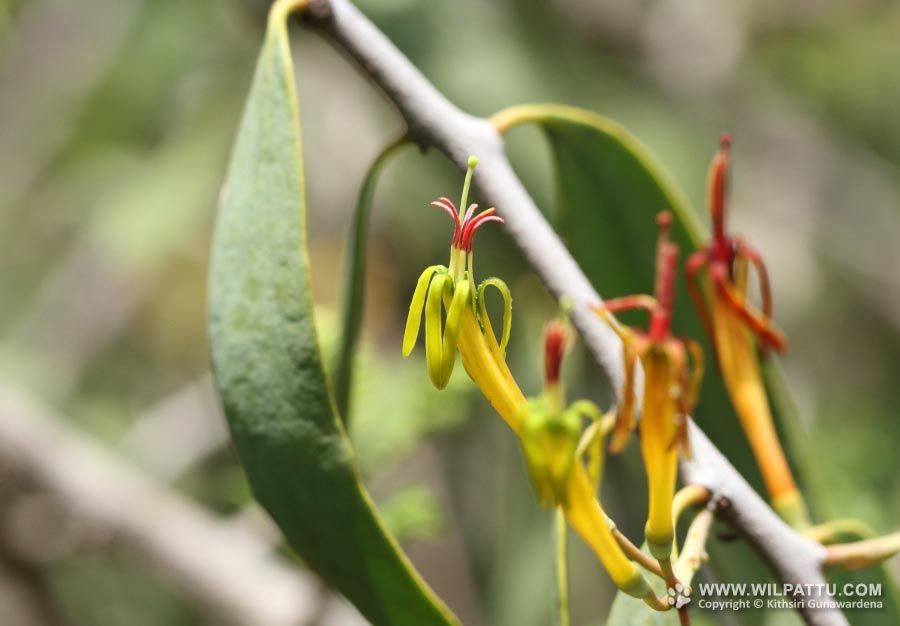
Wild Flowers ‹‹ Go Back
This is an endemic species found mainly on the Northwestern coastal areas of the country. It is a rare hemi parasitic plant that belongs to the mistletoe family of the genus Loranthaceae. Dr. Samantha Suranjan informed me that he observed this species recently in Chundikulam on the Northeastern coast of the country as well. As this species had no known common name and as it is found mainly on the northwestern cost it is referred to as Wilpattu Mistletoe in English and Wilpattu Ehatu/ Pillia in Sinhala.
The conservation status of this species is regarded as Vulnerable (National Red List 2012).
This is a species protected under schedule VIII read with section 42 of the Fauna and Flora Protection Ordinance as amended by Act No. 22 of 2009.
Even though not common this species can be found from Puttalam up to Mannar. These plants attach themselves to a host tree and can capture food from the host with their penetrating roots called the haustoria. Thus they are commonly referred to as parasitic epiphytes. As in the case with the commonly found Honey Suckle Mistletoe Dendrophthoe falcate the seeds of the ripe fruits of this species are also covered with a sticky substance. Thus it is very likely that the dispersal takes place, as in the case of the former species, through birds such as Tickell’s Flowerpecker and other small mammals, which would feed on the ripe berries and deposit them on branches of trees with their droppings.
Three species of butterflies, namely Jezebel, Peacock Royal and Plain’s Blue Royal are known to lay eggs on the leaves of this plant. All three species are found at Wilpattu national park.
In Wilpattu I have observed this rare species at Arawakkalu at Eluwankulama and on the banks of a stream that flows in to Kala Oya close to Gange Wadiya. In both instances I found it growing on Katu Andara Dichrostachys cinerea trees.
